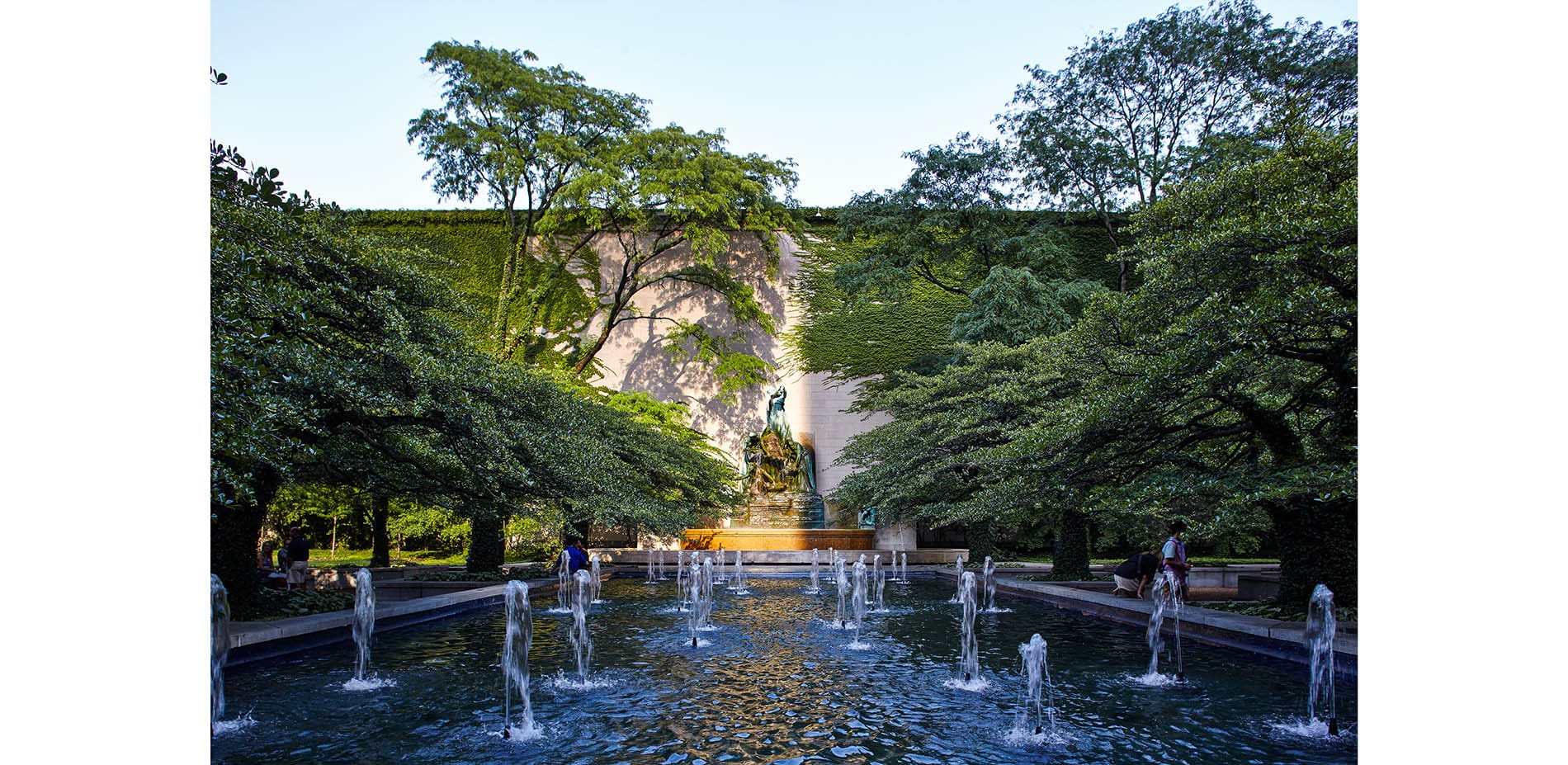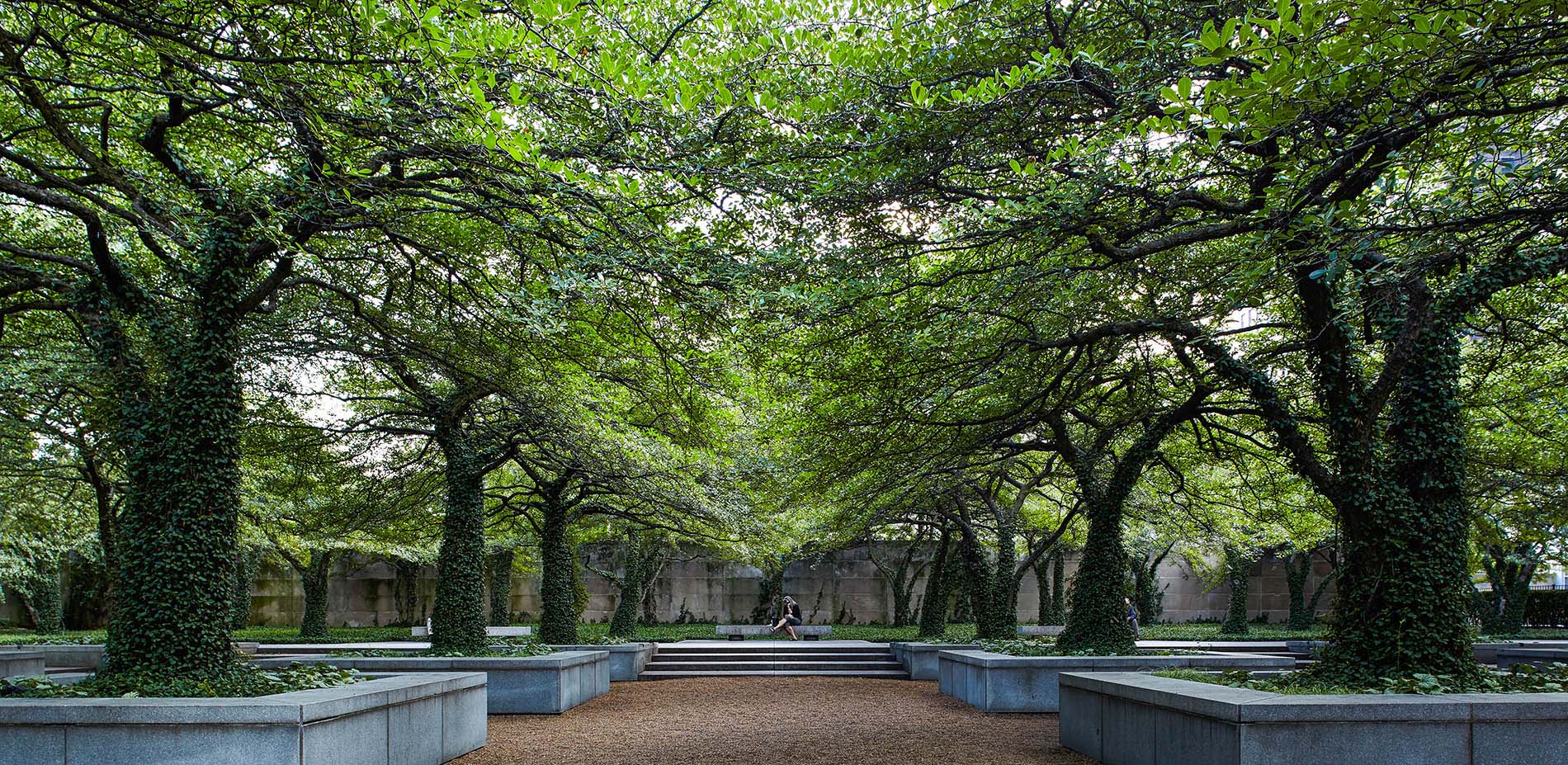
The Art Institute of Chicago South Garden by Dan Kiley, built atop a parking garage, greets more than two million visitors each year and is open to the public, free of charge.
Photo Credit: Tom Harris
Media: Please submit high-resolution image requests to images@asla.org.

Completed in 1967, it is among Dan Kiley’s best preserved commissions. Even the original plantings remain and seasonal plantings continue to enliven the space as Kiley originally intended.
Photo Credit: Tom Harris
Media: Please submit high-resolution image requests to images@asla.org.
Long raised planting beds were placed along the southern edge of the site bordering South Michigan Avenue. Planted with honey locusts, and underplanted with privet and spring flowering bulbs, the tall trees create an entry to the garden, while screening it from the busy street.
Photo Credit: Tom Harris
Media: Please submit high-resolution image requests to images@asla.org.
Raised planters of cockspur hawthorn trees provide seating. The planters are sited 20 feet on center and are both functional and esthetic: at 30 inches high with wide marble edges, they provide seating throughout the park; structure the garden; and increase the soil depth above ground, raising the height of the trees whose branches create a dense overhead canopy.
Photo Credit: Tom Harris
Media: Please submit high-resolution image requests to images@asla.org.
While continued maintenance is necessary to deal with any issues that may arise as the plaza ages, the plantings and hardscape are well-taken care of and the garden is beloved by natives and visitors to Chicago alike.
Photo Credit: Charles Birnbaum, FASLA
Media: Please submit high-resolution image requests to images@asla.org.
The garden embraces the South side of the renowned Art Institute of Chicago and provides a welcome respite for the residents and tourists who visit daily.
Photo Credit: Charles Birnbaum, FASLA
Media: Please submit high-resolution image requests to images@asla.org.
The central plaza space is bisected by a rectangular pool terminating at the Fountain of the Great Lakes, sculpted by Lorado Taft in 1913.
Photo Credit: Charles Birnbaum, FASLA
Media: Please submit high-resolution image requests to images@asla.org.
Around the trees, the content of planters is changed out seasonally to provide a vibrant element to the space.
Photo Credit: Charles Birnbaum, FASLA
Media: Please submit high-resolution image requests to images@asla.org.
Along the rear of the space, honey locust trees and flowering shrubs frame the Taft fountain.
Photo Credit: Charles Birnbaum, FASLA
Media: Please submit high-resolution image requests to images@asla.org.
Recognizing the site’s significance, ASLA awarded the garden a Centennial Medallion in 1999.
Photo Credit: Charles Birnbaum, FASLA
Media: Please submit high-resolution image requests to images@asla.org.
Low jets enliven the water’s surface and provide a soothing background to drown out traffic noise from outside the garden.
Photo Credit: Charles Birnbaum, FASLA
Media: Please submit high-resolution image requests to images@asla.org.
Kiley said “My intent here was to create a drama: to substantiate the act of passing by a grove of trees within the city, to suddenly find oneself before a long vista over a pool, to have one’s eyes arrested by a beautiful sculpture.”
Photo Credit: Nancy Slade
Media: Please submit high-resolution image requests to images@asla.org.















